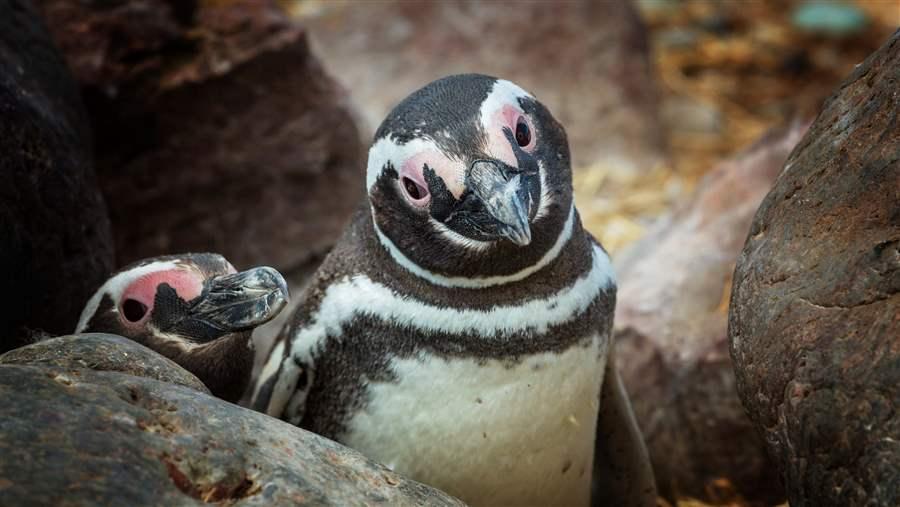Dindim the Rescued Penguin Is Rare Exception to Common Conservation Problems
Brazilian man saved bird from oil, starvation—but many penguins can’t avoid increasing threats
 © Galyna Andrushko/Shutterstock
© Galyna Andrushko/ShutterstockMagellanic penguins’ largest breeding colony in Argentina is declining as a result of man-made pressures, including pollution and fishing.
Dindim, a Patagonian Magellanic penguin, baffled the world with its remarkable survival story. In case you haven’t heard, Dindim washed ashore in 2011, starving and covered in oil, and was nursed back to health by a man in Brazil, Joao Pereira de Souza. Now the bird makes an annual trek of more than 5,000 miles to reunite with its rescuer.
Like many of the world’s 18 penguin species, migrations are not uncommon for Magellanic penguins. After breeding, most travel north, wintering along the coastal areas of northern Argentina, southern Brazil, Chile, and Uruguay.
See Dindim and Pereira de Souza’s unusual bond in this video.
This heartwarming tale is also a cautionary one. Pereira de Souza saved Dindim, but penguin populations are declining around the world and humans are largely to blame for the biggest threats that penguins face: climate change, oil pollution, habitat loss, and overfishing. Penguins spend most of their lives in the ocean and migrate great distances to nest, breed, and forage for food. As the health of the ocean has declined, penguins’ health has suffered too.
Top threats to penguins today
- Climate change. Declining sea ice in some areas and ocean acidification caused by climate change are having drastic impacts on penguin habitats, taking a toll on the birds’ breeding conditions and harming the abundance of Antarctic krill, on which penguins depend for survival.
- Fishing. Increasing demand and concentrated industrial fishing for forage species such as Antarctic krill are making it more difficult for penguins to find food for themselves and their chicks. In addition, some penguin species still face entanglement in fishing nets.
- Habitat degradation. Tourism-related pressures, such as foot traffic and trash, encroach on penguin colonies and nesting sites. Oil spills also have had severe effects on the health of individual colonies of penguins and their foraging habitat.
- Disease. Humans are also responsible for introducing diseases to penguin colonies, which have historically had low exposure to illness because of their remote locations.
Fortunately, actions can be taken to help safeguard these birds and the waters they call home.
Strategies to help protect penguins
Designate marine reserves
Pew’s global penguin conservation campaign is working to protect penguins by establishing marine reserves in Antarctica through the Commission for the Conservation of Antarctic Marine Living Resources, or CCAMLR. The commission, made up of 24 member countries and the European Union, reaches all of its decisions by consensus.
In October, designation of the Ross Sea marine reserve failed by only one vote. If CCAMLR manages to reach agreement this year, the Ross Sea could become one of the largest marine reserves in the world.
Establish responsible fisheries management
Responsible ecosystem-based fisheries management takes into account the foraging needs of predator species such as penguins and includes ongoing monitoring of fish stocks and efforts to shift fishing away from areas used for breeding and foraging.
Defend habitat and improve monitoring
Reducing the number of introduced predators and invasive species and instituting proper management measures to reduce the impact of tourism can help penguin colonies thrive. Improved monitoring of penguin colonies also will help scientists identify possible causes of population declines.
These cooperative actions could not only prevent other penguins from enduring the hardships Dindim did, but they could also improve ocean health for future generations of these iconic species.







